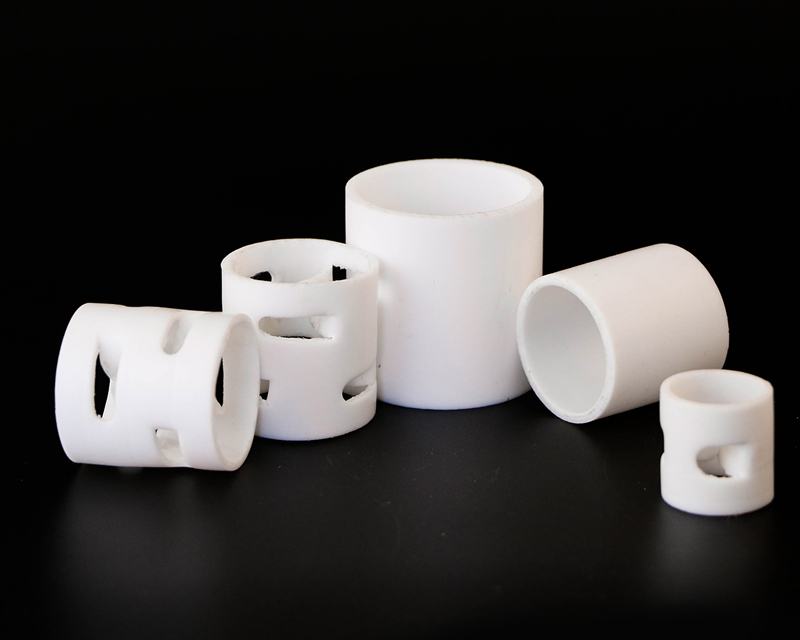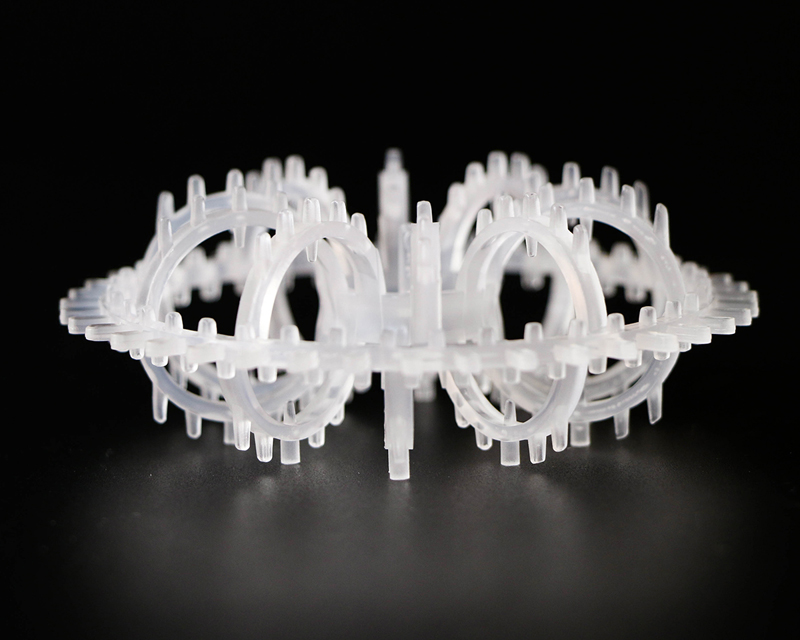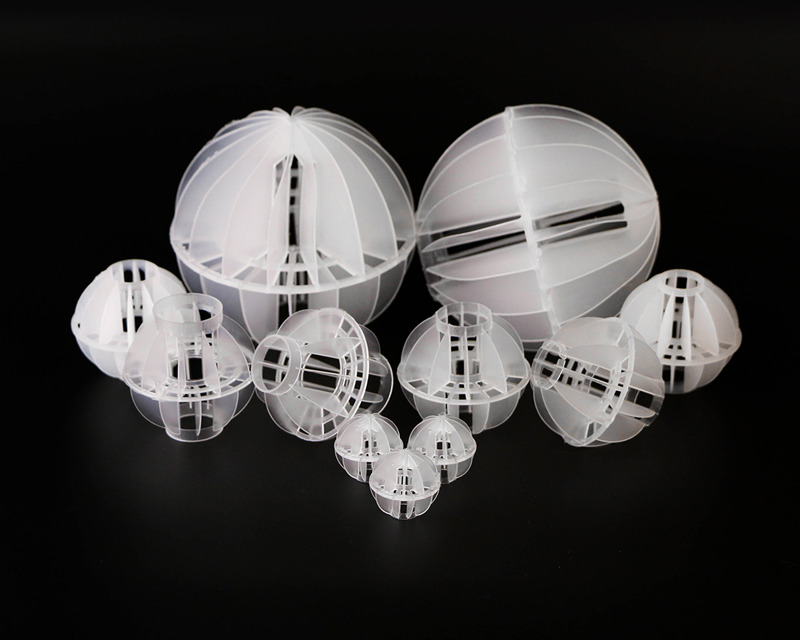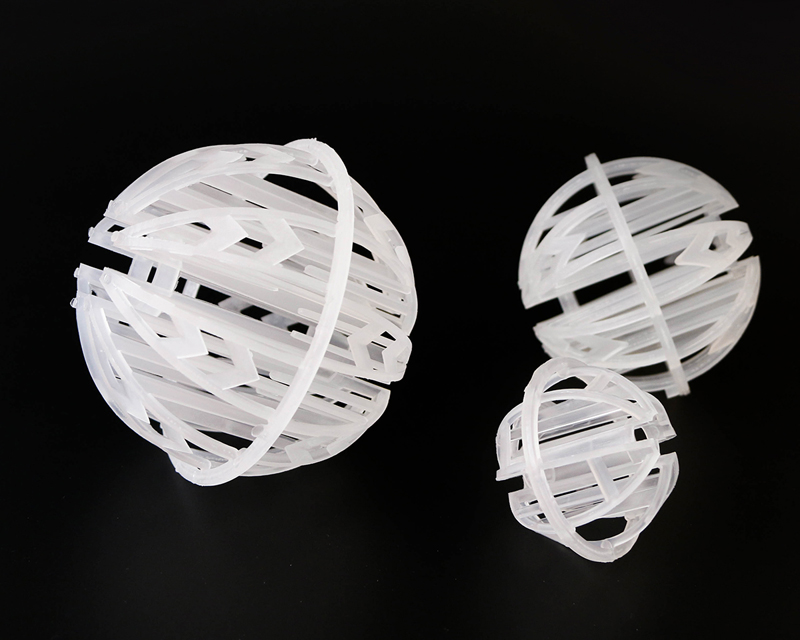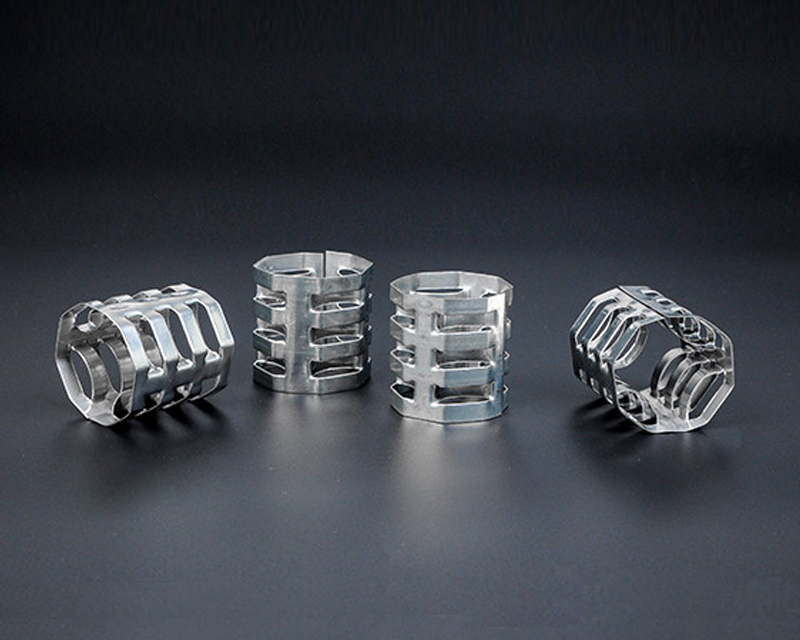Product overview:
Plastic Taylor garland packing was developed by A.J. Teller in 1954, so the garland is often called Taylor garland. This kind of packing is made up of many rings. Because the gaps of the packing can have a higher liquid holding capacity, the residence time of the liquid in the tower is longer, thereby increasing the contact time of the gas-liquid two-phase and improving The mass transfer efficiency of the packing is improved. Polypropylene packing has the characteristics of large porosity, low pressure drop and mass transfer unit height, high flooding point, sufficient vapor-liquid contact, low specific gravity, and high mass transfer efficiency. It is mostly used in gas scrubbing and purification towers.
Product Features:
●The filler has a large porosity and is not easy to be blocked. It also has the advantages of large flux and low resistance. The rosette packing is also called the plum rosette packing, which is made up of many rings, because the gap of the packing can have a higher holding capacity. Liquid volume, due to the relatively high stagnant volume in the gaps of the packing, the liquid residence time in the tower can be longer, thereby increasing the gas-liquid contact time and improving the mass transfer efficiency of the packing. Polypropylene packing has the characteristics of large porosity, low pressure drop and mass transfer unit height, high flooding point, sufficient vapor-liquid contact, low specific gravity, and high mass transfer efficiency. It is mostly used in gas scrubbing and purification towers.
●Compared with polypropylene garland filler, plastic Taylor garland has longer service life, better chemical resistance, and improved mechanical properties, creep resistance and dimensional stability. The product has a temperature resistance of 127°C and a heat distortion temperature of 160°C. It has high strength, chemical resistance, good electrical insulation, impact resistance and many other excellent properties, and good toughness.
|
Product name
|
Plastic Taylor Garland
|
|
Material
|
PP, PE, PVC, CPVC, RPP, PVDF AND ETFE PTFE
|
|
Service life
|
3 years
|
|
Size mm
|
Specific surface area m2/m3
|
Porosity%
|
Pieces/m3
|
Bulk weight Kg/m3
|
Dry packing factor m-1
|
|
25*9*(1.5*2) (5 ring)
|
269
|
82
|
170000
|
85
|
488
|
|
47*19*(3*3) (9 ring)
|
185
|
88
|
32500
|
58
|
271
|
|
51*19*(3*3) (9 ring)
|
180
|
89
|
25000
|
57
|
255
|
|
59*19*(3*3) (12 ring)
|
127
|
89
|
17500
|
48
|
213
|
|
73*27.5*(3*4) (12 ring)
|
94
|
90
|
8000
|
50
|
180
|
|
95*37*(3*6) (18 ring)
|
98
|
92
|
3900
|
52
|
129
|
|
145*37(3*6) (20 ring)
|
65
|
95
|
1100
|
46
|
76
|
|
Performance
|
Large porosity, low pressure, low mass transfer unit height, high flooding point, sufficient gas-liquid contact, small specific gravity, high mass transfer efficiency
|
|
Advantages
|
1. The special structure enables large circulation, lower pressure and good mechanical strength.
2. Strong corrosion resistance, large porosity, energy saving and environmental protection, low cost, light specific gravity, easy to load and unload.
|
|
Application field
|
Used in gas absorption tower, acid gas adsorption system, fertilizer production. The maximum operating temperature of plastic random packing is 280 degrees Celsius, and it is widely used in packing towers in petroleum, chemical, chlor-alkali, gas, and environmental protection industries.
|
|
Properties/Materials
|
PE
|
PP
|
RPP
|
PVC
|
CPVC
|
PVDF
|
|
Density (after injection)
|
0.98
|
0.96
|
1.2
|
1.7
|
1.8
|
1.8
|
|
Operating temperature
|
90
|
>100
|
>120
|
>60
|
>90
|
>150
|
|
Corrosion resistance
|
GOOD
|
GOOD
|
GOOD
|
GOOD
|
GOOD
|
GOOD
|
|
Compressive strength
|
>6.0
|
>6.0
|
>6.0
|
>6.0
|
>6.0
|
>6.0
|

 English
English Chinese
Chinese














